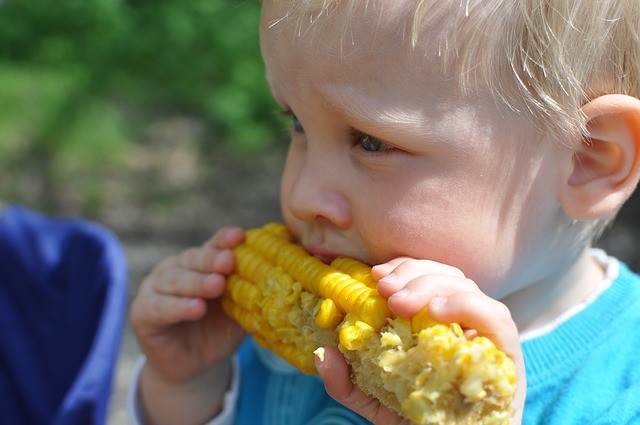When your child begins chewing, you may notice their mouth moving in an up-and-down motion that characterizes lateral chewing. As your child ages, they will develop a rotary chewing method, which involves the mouth moving side to side. The tongue moves horizontally to break down food so it becomes digestible.
Rotary chewing is the preferred and mature way of chewing. It decreases the time needed to break down food, so mealtimes aren’t long and exhausting. It ensures people can eat different types of food, so they get proper nutrition.
Proper chewing can also aid with speech development. It allows children to develop motor skills in their mouth and build muscles that correspond to those used when speaking.
Rotary chewing skills should come naturally, but some children are slower to develop them than others. Read on to learn what you can do to ensure your child develops healthy eating skills that support optimal oral health.

How to Help Children Develop Rotary Chewing Skills
Develop Rotational Skills
Rotational skills in the mouth correspond to rotational skills in the body. A child who has difficulty turning their torso when sitting up could also face challenges developing a vertical chewing style.
You can encourage torso turning during play by drawing your child’s attention to an object behind them when they are sitting up. Or manipulate their body with gentle stretches. In time, they will turn their torso more easily, a skill that will eventually translate to oral movements.
Encourage Lateral Chewing
Children must develop lateral chewing before they move on to rotary chewing. Start with dissolvable stick shapes like veggie straws for thin pretzels. Place them so they reach their molars or pre-molar gums. When the crumbs touch their tongue, they will get feedback from crunching, which helps them develop a lateral, then rotary, chewing motion.
You can get the same results by using very small pieces of meat or snack bars. Ensure they are small enough so as not to cause a choking risk. Place them at the back of the gums to encourage chewing.
Try Tongue Lateralization
Tongue lateralization exercises will help your child develop the motor skills required for proper chewing. You can use an oral probe or similar tool to encourage the necessary tongue movements. Stroke the sides of the tongue five times on one side, then the other, to stimulate back-and-forth movement.
You can also place the probe tip inside the cheek on one side of the mouth and have your child touch it with the tip of their tongue. Repeat five times before moving to the other side. Place peanut butter on the tip of the probe to motivate your child.
Kidology Can Help Your Child Reach Development Goals
Kidology can assist you in teaching your child rotary chewing and reaching other developmental goals. We offer speech therapy, physical therapy, behavioral services, and special instruction. We also have Playsplace, which offers therapeutic play for children.
Contact us to ensure your child has all the tools they need to develop into a healthy adult.






